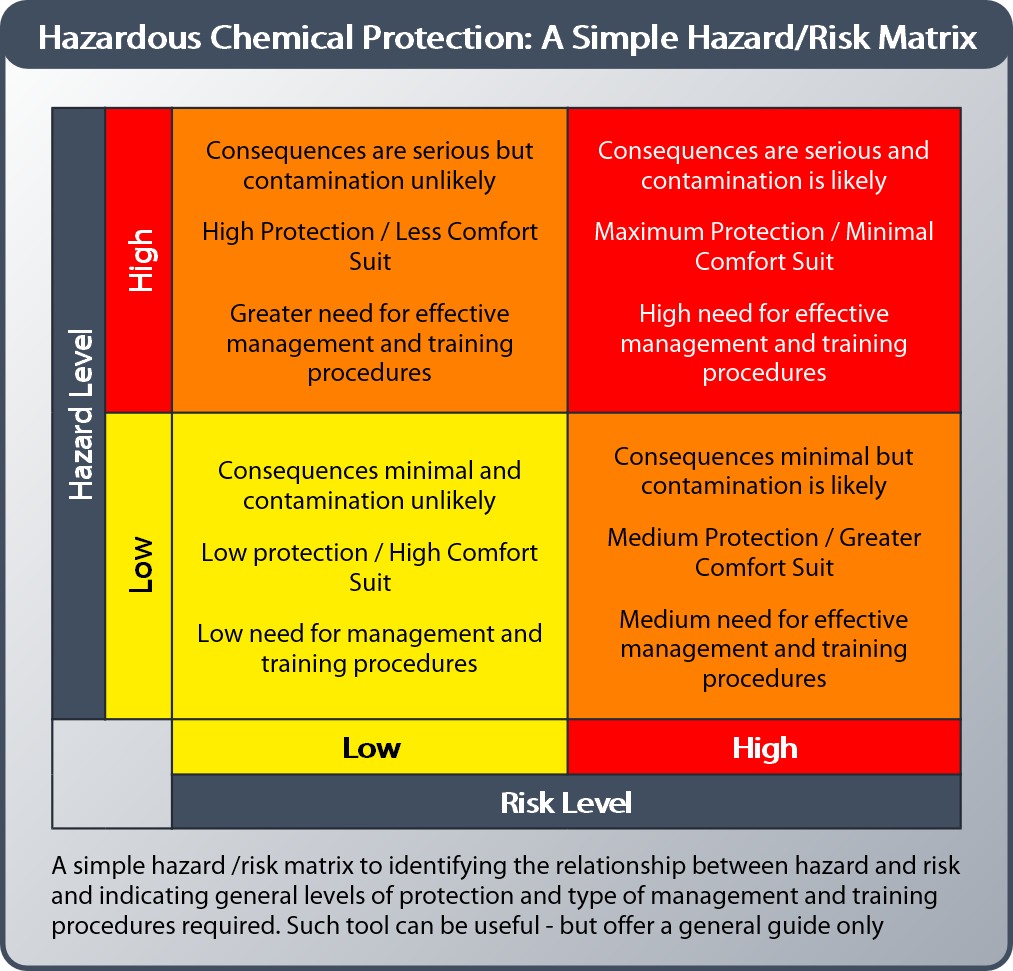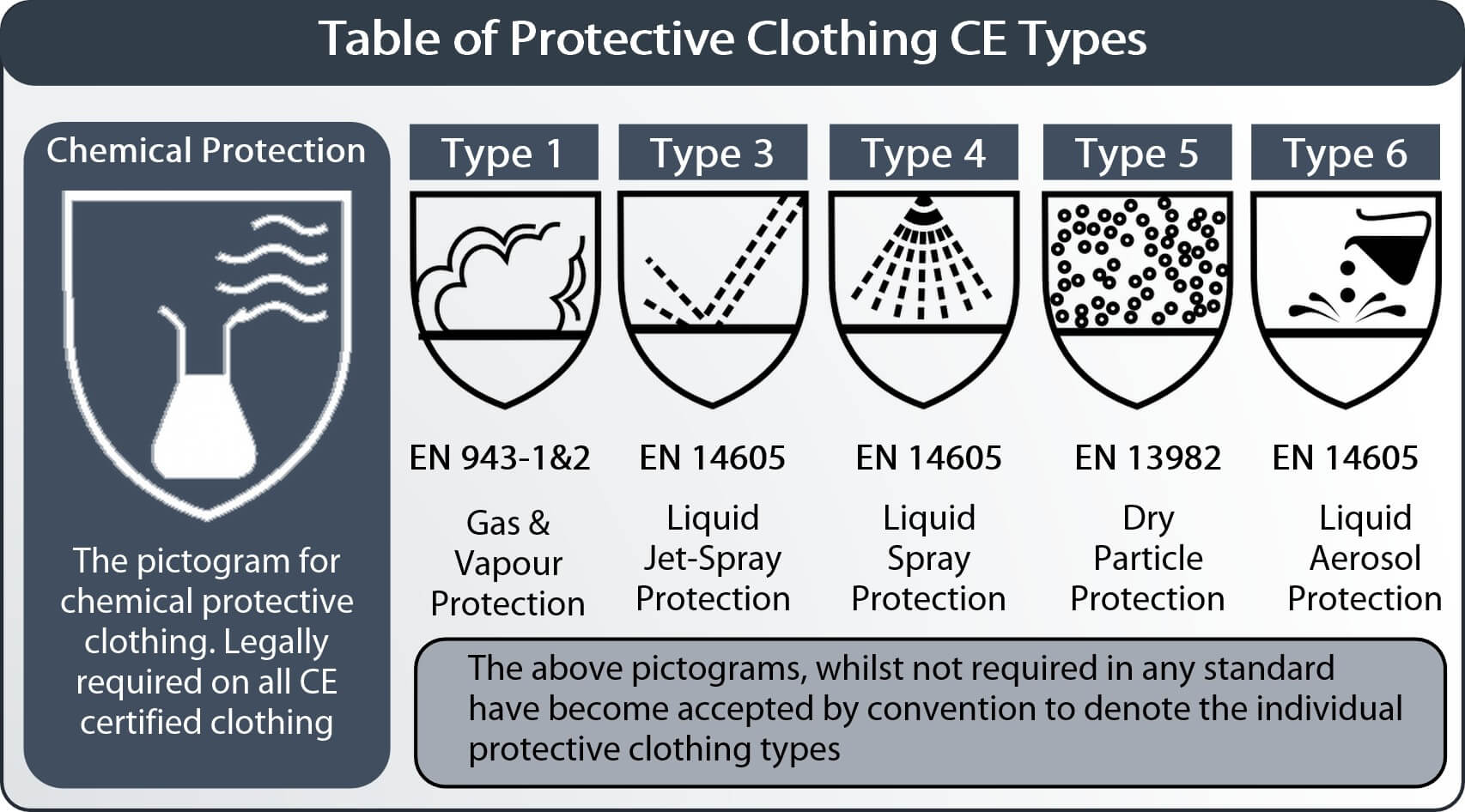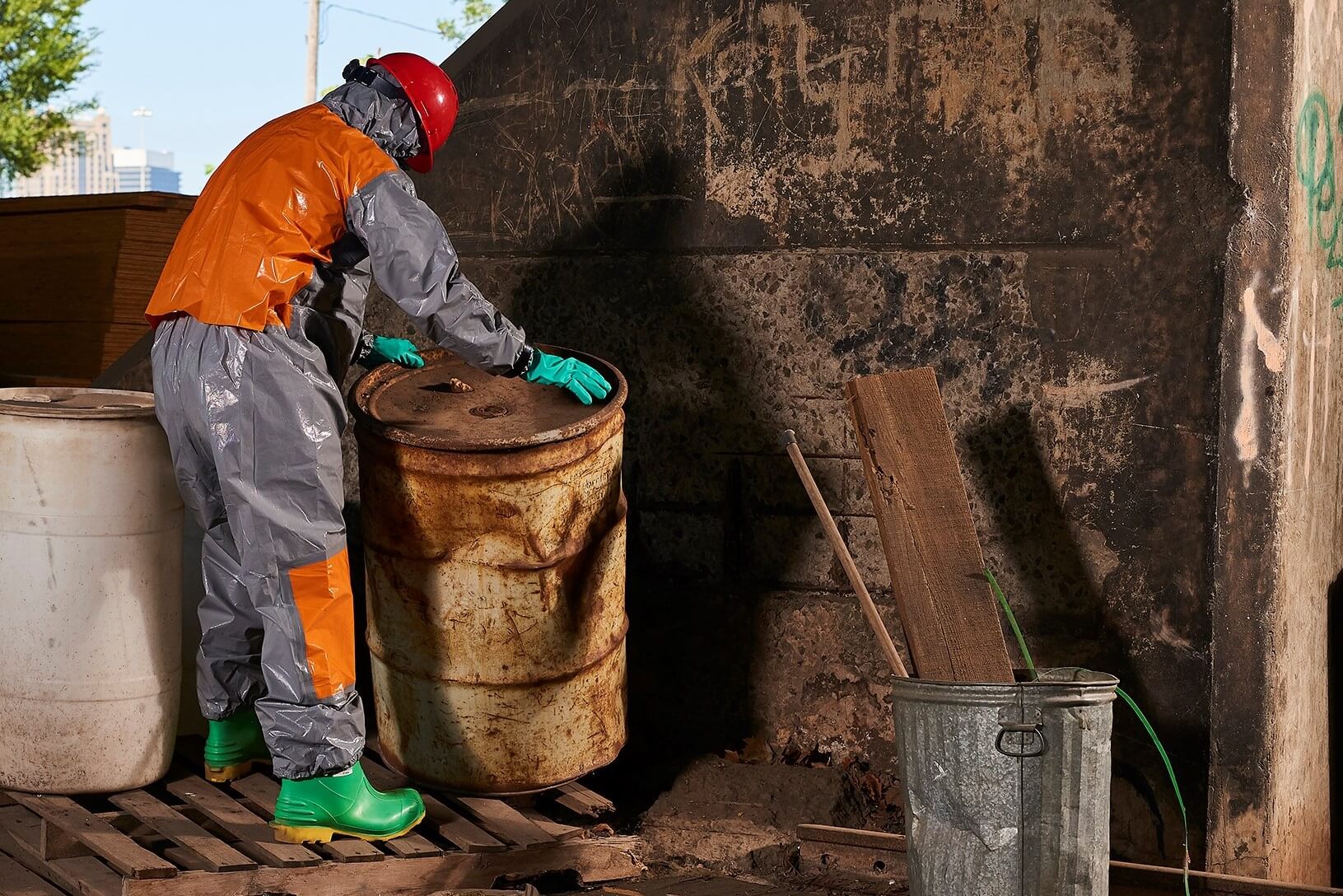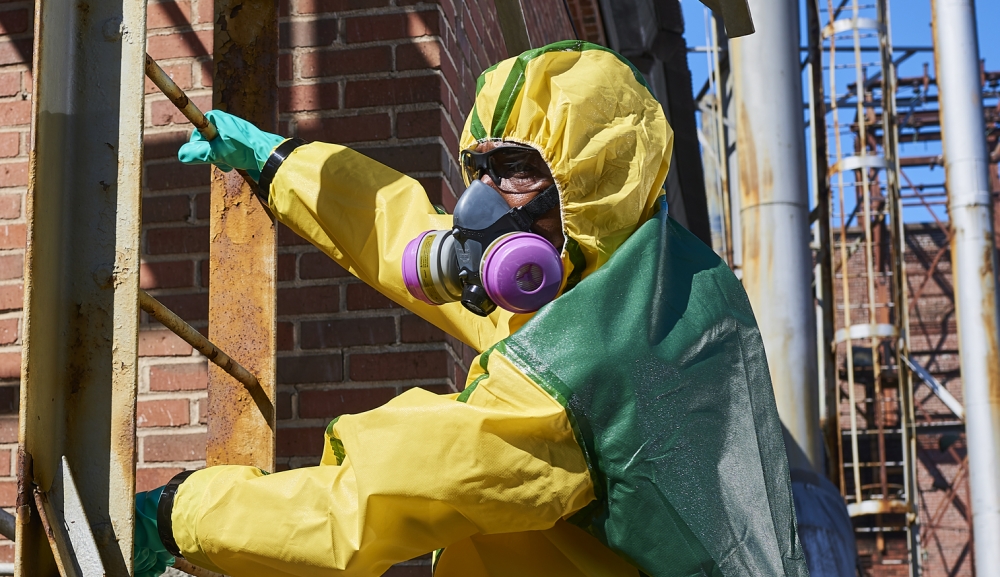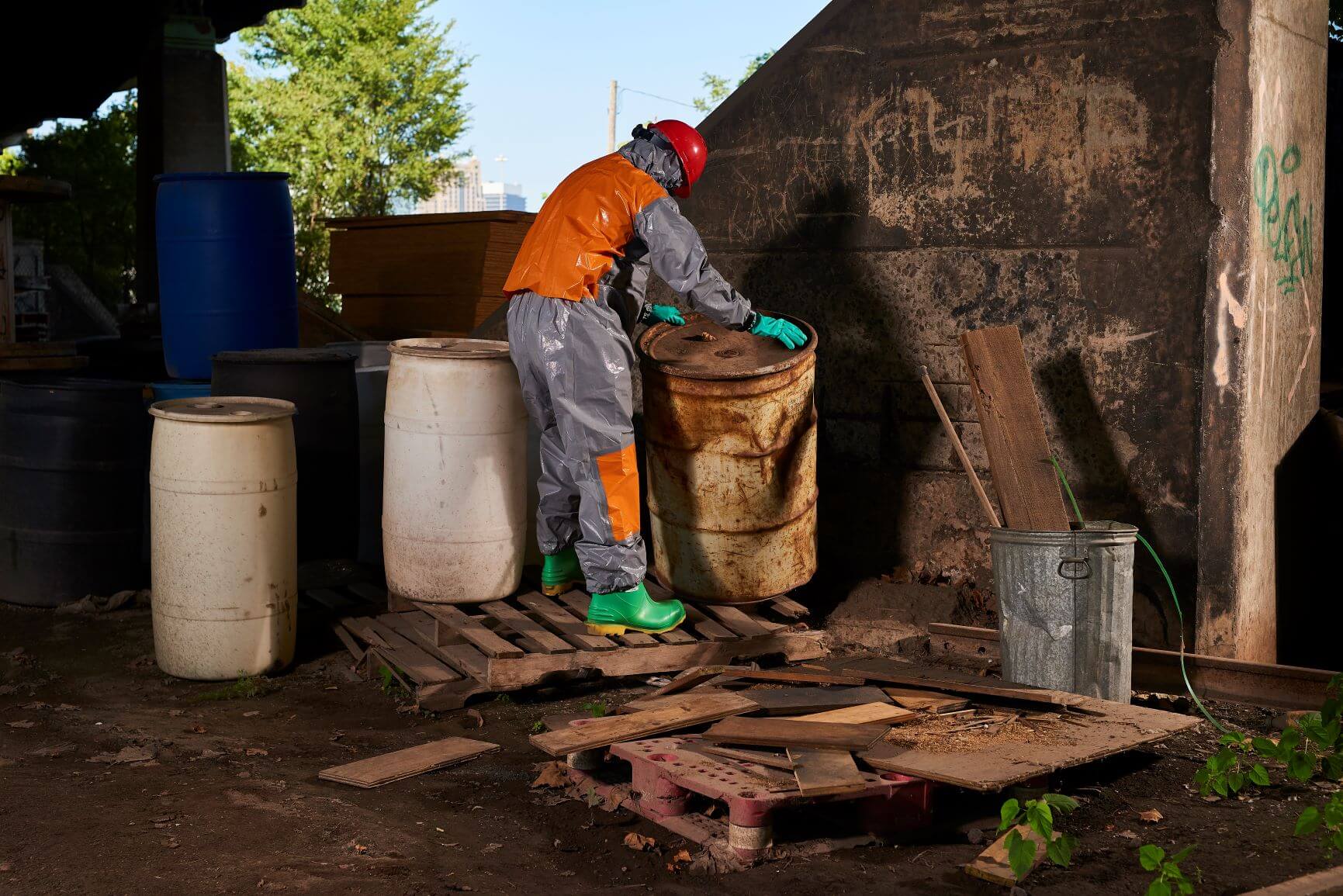With the emergence of multiple brands and types of chemical safety clothing in the last two decades, for the safety manager faced with a wide range of products offered by multiple manufacturers the process of selecting the right chemical suit for the job and establishing procedures to manage them appropriately has become increasingly complex.
So how does a safety manager navigate that complexity and choose effective safety equipment and procedures?
This blog and the accompanying 13-point checklist outlines a comprehensive framework to help the safety manager ask the right questions with the aim of ensuring the best suit for the job is selected and to guide in developing suitable procedures to ensure their effective management in use.

The Starting Point: A Risk Assessment
| “PPE is always last line of defense – used only where the hazard and risk cannot be removed” |
Any process of PPE selection is founded on a risk assessment, generally consisting of five parts:-
- Identify the hazards
- Decide who is at risk and how
- Identify and evaluate that risk and determine control measures where possible
- Record and implement the findings.
- Review regularly and update when necessary.
In the case of chemical safety clothing, the hazard is contamination of workers by a chemical, and chemicals are a hazard more problematic than most, partly because contact can go unnoticed. Contamination will often have no immediate effects and although long term, the effects can be irreversible and devastating… certainly life-changing and potentially life ending. You can read more about the hazards of hidden “killer chemicals” in our blog here.
Control measures identified in the risk assessment – in other words, action taken to minimize the risk of a worker being contaminated – do not start with PPE. In fact, PPE should be the last line of defense, used where the hazard and risk cannot be entirely removed:-
- Can the chemical be replaced with a less harmful option?
- Can systems or processes be revised so the risk of contamination is reduced or removed? (modern chemical plants increasingly use sealed systems so that workers need never – or at least rarely – risk contact with a chemical)
- Can other processes be changed or measures be employed to remove or reduce the risk of contamination? For example, could maintenance procedures by through investment in robotics rather than people?
If the risk of contamination then remains, the question of choosing the best chemical suit to further minimise that risk can be addressed, along with appropriate use and management systems to maintain protection at the highest level.
Chemical suit choice and management systems should be based largely on considerations of the chemical, the hazard it presents and factors in the task itself along with the environment in which the task takes place.
1. Understanding the Chemical and Hazard

1. Consider the properties of the chemical
Whilst understanding permeation rates and safe-wear times is vital, there are several other questions relating to properties of the chemical which must be considered:-
- What is the chemical phase?
Gas, Liquid or Dry particle?
- What is the chemical’s boiling point?
How easily/in what circumstances will it vaporize and to what extent? - What are the likely routes of contamination?
Dermal? Ingestion? Inhalation? - What is the hazard?
What are the consequences of contamination? What health damage will the chemical do? - Are the consequences short or long term?
Whilst some chemicals, such as acids will cause immediate burns, others will result in health problems months or even years later - Will the contamination be noticed immediately if it occurs or will it go unnoticed?
Those chemicals where contamination might be unnoticed are potentially the most problematic to deal with. - What is the toxicity of the chemical?
The toxicity – the amount of the chemical that, if contamination occurs might cause harm to the wearer – is a vital part of understanding the level of protection needed and most importantly, in assessing effective safe-wear times.
The answers to each of the above questions will help build up a more complete picture of the the hazard you face, and ensure you do not miss an an element that might be vital. For example, if you are protecting against a liquid chemical and so choose a liquid protective Type 3 or 4 suit, but fail to account for the fact that it is a chemical can easily vaporize at relatively low temperatures, in practice the chemical can vaporize and then behave more like a gas which will penetrate a Type 3 suit more easily and become more of a respiratory hazard rather than a liquid hazard.
The issues around the various properties of the chemical outlined here will be addressed in greater detail in a forthcoming blog.
The Relationship Between “Hazard” and “Risk” |
|
There is a clear distinction between hazard and risk. In the case of chemicals:- The HAZARD is the consequence of contamination – so for example that contamination might cause cancer in the long term. The RISK is the likelihood of that contamination actually occurring and that cancer develops. An understanding of risk and hazard can be used to develop a simple hazard/risk matrix to guide in identifying the level of protection and processes required. It can also be a useful tool to indicate how far protection can be compromised in favour of comfort.
|
Once the general properties of the chemical and its effects have been considered, the issue of permeation can be addressed.
2. Analyze Permeation and Safe Wear Times
The focus of the selection procedure is often on whether the suit fabric will resist permeation of the chemical sufficiently to allow the suit to be safely. However, too great a focus can be misleading for two reasons:-
1. The importance of distinguishing between Permeation vs Penetration
The difference between these two distinct processes is important.
Permeation is a molecular level process whereby a chemical will pass through a “solid” suit fabric. It deals with very small volumes of chemical measured in micrograms (µg) and so is only relevant for more toxic chemicals.
Penetration is a macro-level process where a gas, liquid or dust will penetrate through holes and gaps in the fabric or garment construction and is measured in much larger, “visible” volumes than with permeation.
This short video explains the difference between permeation and penetration further:
The fact is, penetration through any gaps in the garment construction or ensemble (ie through connections with other PPE such as gloves, face-mask etc), is more likely, is a greater risk than permeation and has potentially worse consequences given the larger volumes involved.
Thus, focus on fabric permeation resistance at the exclusion of considering penetration of the whole PPE ensemble can result in failure to address the greater risk. You can read more about the importance of chemical suit construction and design in our blog here.
2. Misunderstanding of the Permeation Test
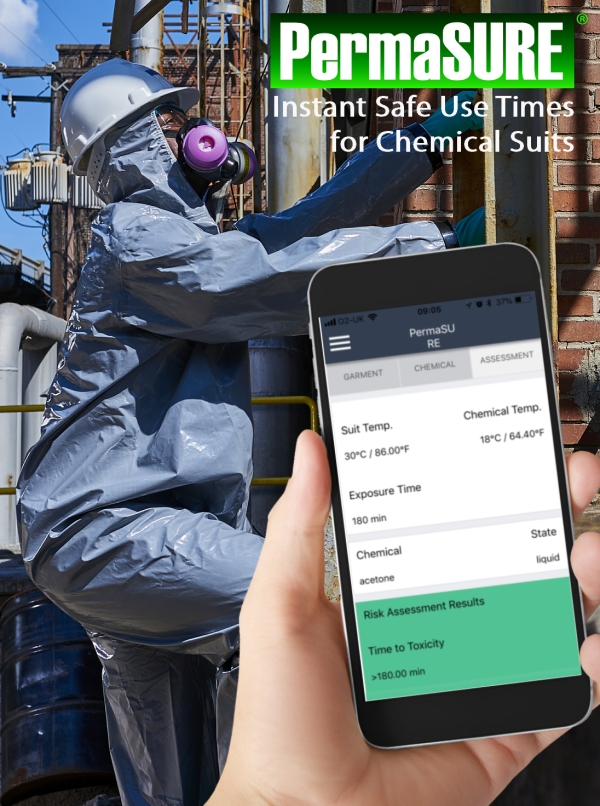
This is a basic misunderstanding of the test that could result in workers being poorly protected. Calculation of safe-wear times in order to ensure suits are not used for longer than is safe, is not indicated by this test and for toxic chemicals should be calculated manually or through the use of tools such as the Permasure® app.
Following analysis of chemical properties and permeation/penetration resistance the physical contact type should be addressed.
3. Chemical Contact Type: Understanding CE Standards and Tests
In addition to the chemical phase, the type of liquid spray a worker is likely to come into contact with is an important indicator of the type of suit required. CE standards provide a useful guide, identifying three different “Types” of liquid spray:-
- Type 6: Liquid Aerosol: fine droplet spray such as from a spray can of paint
- Type 4: Liquid Spray: A shower type spray. Considerable volumes but little pressure
- Type 3: Liquid Jet Spray: strong, pressurized sprays that may be directed at and apply considerable pressure to specific points on the garment.
The full range of 5 clothing protection types including Types 1 and 5 (Type 2 was deleted in the 2015 version of EN 943) is shown in the table below:-
| Every selection decision is subject to the chemical toxicity |
| * Of course, this is subject to the hazard – the toxicity of the chemical. A high hazard chemical might justify a higher level of protection even if the liquid spray is Type 6. |
In general terms:-
- a Type 6 spray indicates a lower level of protection is required* – generally suits constructed with stitched seams and partially breathable fabric.
- Type 3 and 4 sprays however require a higher protection level – generally non-breathable barrier fabrics with sealed seams – welded or stitched and taped.
Understanding the difference between Type 3 and 4 can be useful in identifying an ideal combination of protection and comfort – especially since many garments available are BOTH Type 3 AND Type 4. Identifying that you have a Type 4 rather than a Type 3 application means a greater choice of more comfortable and flexible options – such as the Type 4 Cool Suits.
Finally, once the chemical, permeation/penetration issues and spray type have been addressed, the process should turn to consideration of factors in the task itself and in the environment where the task takes place.
4. Task- and Environment-Related Factors
Consideration of the task itself and what it entails can be an important influence on both the choice of garment and the type of procedures required to manage their use.
Whilst it would be impossible to provide an exhaustive list of important factors, a risk analysis should take a holistic view of task and environment with the aim of identifying issues that MIGHT be important. Often these factors will indicate requirements for specific strength properties or design elements in a chosen suit. For example:-
- Specific movements involved in a task can suggest specific needs in the suit:
-
- Climbing ladders
Places particular stress on a garment crotch so a more ergonomically designed suit – perhaps incorporating a crotch gusset – is a better choice. (The absence of a gusset often means a weakness at the crotch where the seams will split easily under stress)
- Climbing ladders
-
- Crawling
All Lakeland ChemMax® chemical suits feature cushioned knee-pads for added protection and comfort Results in excessive abrasion on the knee – especially on a rough floor. Disposable type fabrics are likely to tear easily, so a garment with high abrasion resistance or the addition of protective kneepads would be a good choice
- Crawling
-
- Communication
Working in teams where constant communication is important might require consideration of noise levels generated by the suits. Many suits are based on plastics which can generate considerable noise during movement, so choice of a garment that generates lower noise levels can contribute to reducing risk of miscommunication.
- Communication
- Similarly, factors in the environment where the task takes place can also influence the garment choice:
- Sharp edges or confined spaces
If an environment is confined and/or contains sharp edges or corners where garment fabric might snag and tear, then fabric with high tear resistance would be a good choice.
- Sharp edges or confined spaces
-
- Poor light conditions and/ or moving vehicle hazards
Where a task takes place in a dim area – especially where moving vehicles might be a hazard – lighter color clothing (white or yellow rather than navy or grey) might reduce risk.
- Poor light conditions and/ or moving vehicle hazards
-
- Moving vehicle hazards
Where vehicles might be a hazard, again a suit that generates less noise might reduce the risk that a worker will fail to hear a moving vehicle approaching.
- Moving vehicle hazards
With chemical safety clothing used in multiple industries globally no combination of application and environment is the same and of course there are many other possible factors in the task and environment that might prove important.
The key is to ensure the risk assessment identifies issues that can influence choice of suit and processes so that the risk of missing something is minimized.
Certification to chemical suit CE standards includes tests of various physical properties of suit fabric and construction. The results are classified from 1 to 6 (with 6 being the highest) and classes achieved are shown in User Instructions accompanying all garments, making comparison of products easy for the users. In assessing task and environment factors an understanding of these tests and classifications can be useful. You can find out more about where to find this information and how to use it our blog here.
The four points above address issues to consider in the selection of chemical safety clothing. However, many of those issues also have an influence on the type of procedures required to handle management and use once your chemical suit is chosen.
5. Determining Management and Use Processes
The insidious nature of many chemicals – the fact that they have no immediate effects but long term consequences can be serious – points to a need to establish more effective and regular training and management systems to ensure protection is maintained during actual use and over time. Wearing any chemical suit is not comfortable, and if the hazard is unseen it is unreasonable to expect a wearer to maintain high standards month after month – especially if they remain ignorant of the long term hazard because no training on the subject has been conducted. Failing to appreciate the danger and developing an “it’ll be OK” approach is almost inevitable unless focus on the unseen danger is maintained.
Similarly, if a task involves strenuous movement or takes place in area where damage to a suit is more likely, then the need to establish habits of regular checking of suits during use, to ensure workers are in pairs or teams and regularly checking each others PPE, or simply the need to establish strict donning and doffing procedures, becomes even more critical.
Thus, while this blog has focused more on selection, other articles in the series will both look in greater detail both at selection and at issues relating to the management and use of chemical safety clothing.
Conclusion: A Holistic Approach to PPE Selection and Management Processes… a 13-Point Checklist
With over 8000 chemicals in use globally their often insidious nature means the need for a holistic approach to chemical safety clothing selection and the establishment of effective in-use management processes is critical.
Our 13-point checklist is designed to guide users through the key areas for consideration under the three overall headings of selection, management and use. For coming updates and further guidance and information on issues of chemical suit selection, management and use sign up to our blog.


